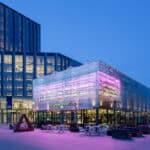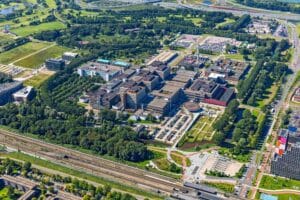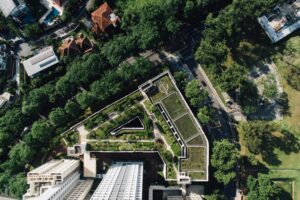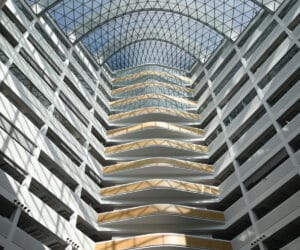

Planetary Boundary Proof: what is it and why is it so important?
When it comes to making buildings more sustainable, the first thing that comes to mind is reducing energy consumption which, by definition, will also reduce CO2 emissions. This is, of course, a good first step, but if we look at the overall impact of buildings on the planet, then reducing energy consumption is just not enough. After all, buildings also consume huge amounts of raw materials and resources. In this article, Boas Kraaijeveld explains more about the impact of buildings on the earth and how the term “planetary boundary proof” relates to this.
Planetary Boundaries
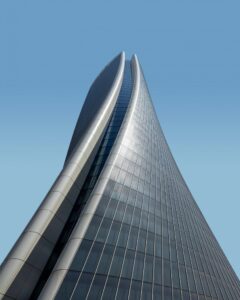
When it comes to the topic of sustainable buildings, the focus is largely on energy consumption. But is that right? Because even energy-neutral buildings still consume a lot of raw materials and do not inherently have a positive impact on biodiversity.
There are limits to what our ecosystems can handle before they change irreversibly. These boundaries – the so-called Planetary Boundaries – have been mapped out by Prof. Dr. Johan Rockström and the Stockholm Resilience Centre. The Planetary Boundaries set the limits within which humanity can continue to develop over future generations. But… as you can see in the figure below, we have already crossed several boundaries. The curves for biodiversity, the nitrogen and phosphorus cycle, land use (deforestation) and climate change are particularly ominous. So it is time for action to get back into the safe zone, or Planetary Boundary Proof.
Is circular construction planetary boundary proof?

If we zoom in on the Netherlands, we must unfortunately also observe that we are not living within the boundaries of our planet. This year, for example, Earth Overshoot Day for the Netherlands came on April 27th. That’s the day on which the Netherlands used up all the raw materials that the earth could replenish in a year (if every country lived like the Netherlands). As a year-on-year trend, Earth Overshoot day has been coming earlier and earlier every year. To turn this around, we need to drastically reduce the consumption of raw materials and increase our positive impact. The circular economy will be a major part of doing this.
The challenge is particularly great for buildings, as they are responsible for 40% of emissions and consume huge amounts of raw materials. Circular construction could be the solution. After all, circular building means that all raw materials remain in closed cycles, without waste and harmful emissions, and at the same time have a positive effect on the natural environment. This goes not just for new construction, but for existing construction as well. For existing buildings, we will have to limit or even stop demolition and ensure that we focus on renovations, reusing materials and greening the environment.
What “Planetary Boundary Proof” construction means
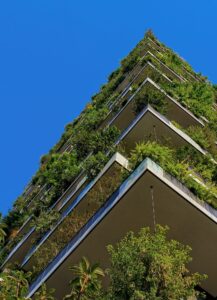
Truly sustainable buildings are not only energy-neutral and circular, but also nature-inclusive: all these things add up to being “Planetary Boundary Proof”. Indeed, restoring nature has a positive effect on many planetary boundaries: it improves biodiversity, air quality and land use (number of hectares of nature). It also removes CO2 from the air and retains water.
Green roofs, green walls, Tiny Forests and urban farms and gardens can all be constructed on space that is currently going unused. In addition, you can easily create space for animals and insects with things like bird boxes and bee hotels. In the end, the task is simple: tiles out, plants in, and cover all walls and roofs with greenery. Fortunately, there are already several pioneers proving that this is possible. Nature-inclusive building brings maximum benefits to the planet and to people.
What can building owners do?
A good start for building owners is to use the BREEAM methodology as a guide for making buildings sustainable. BREEAM is an integrated certification that assesses buildings not only on energy, but also on biodiversity, material use, health, pollution and more. BREEAM Excellent and Outstanding certified buildings are well on their way to Planetary Boundary Proof. Integrating greenery in particular has many advantages. After all, green buildings not only have a positive effect on nature, but also on people themselves. For example, the mere sight of greenery can increase productivity by 15%. A win-win-win, for the building owner and the user as well as for the planet.

